How To Set Up A Jigsaw
Jigsaws: How to Use and Cut With a Jigsaw
Updated: December. xiv, 2022
Utilize a versatile jigsaw tool to cut lumber, plywood, metal and tile.
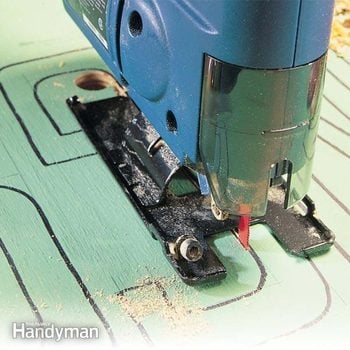
A jigsaw tool is the k chief of cutting shapes in a variety of materials. All yous need is the right blade. We'll prove you how to use this versatile power tool for cutting intricate shapes and for making compound and bevel cuts in boards and other materials.
You might likewise like: TBD
- Time
- Complexity
- Cost
- An 60 minutes or less
- Beginner
- $51–100
Video: How to Use a Jig Saw
Jigsaw: Cutting a range of materials
My jigsaw often sits for months just gathering dust. But then I'll need to cut out an intricate pattern for a hobby project, saw into a countertop to install a kitchen sink or cut a cloth similar thin tile or metal that my other saws can't handle. That'southward when I remember why I love this jigsaw tool. It'south a versatile tool a novice can safely operate, control and—with minimal instruction—enjoy expert results from within minutes of picking it upward. We'll show y'all how to get superior results cutting wood, plastic laminate, ceramic tile and metal.
Cutting wood with handheld jigsaw
Jigsaws are ideal for cutting curves and complex shapes in woods (Photo i). They as well work well for making brusque crosscuts on a board (Photo 2) and finishing within corner cuts (Photograph 3) that yous starting time with a circular saw. Jigsaws are not expert for making fast, long, straight cuts. Use a round saw instead. When cutting wood, follow these guidelines:
- Jigsaws work best for cutting softwood that'due south no more than one-1/2 in. thick and hardwood upwards to iii/4 in. thick. Jigsaw blades tend to bend when cutting curves in thicker boards, leaving a beveled edge rather than a foursquare one. To go on the cut square, employ a abrupt blade and avoid forcing the saw through the cut.
- To "plunge cut," that is, brand an entry saw cut into the middle of your wood, tip the jigsaw so that the blade is parallel to the workpiece and the saw'southward weight rests on the front end lip of the shoe. Start the saw at maximum speed, tilt the shoe and steadily lower the stabbing blade into the wood. I unremarkably reserve plunge-cutting for rough work so that an errant blade doesn't slash and mar expensive wood. In fragile material, drill a ane/2-in. starter hole to safely position the blade for a cut.
- For quick cutting, employ a coarser blade. But note that the coarser the bract, the more sanding later.
- Most woods-cut blades for jigsaws are designed so the teeth cut on the upstroke. For fine piece of work demanding less chipping—in forest veneers, for example—choose a "downstroke-cutting" bract (Photograph four). An alternative is to identify painter's or masking tape on the cut line path before drawing on the pattern line.
Cut countertops
A jigsaw is perfectly suited for making the curved (or curt diagonal) cuts at the corners of countertops and for the final long cut parallel to the backsplash. When installing a sink, make the front and two side cuts in the countertop with a circular saw. It'southward faster and in that location'southward no blade deflection to bargain with.
The narrow infinite between the sink cutting line and the backsplash won't adapt the wider circular saw shoe but lets the narrower shoe of most narrow-trunk jigsaws sneak in perfectly (Photo 4).
If yous're not comfy making countertop cuts with a circular saw, employ a jigsaw for the whole chore. Cutting through a countertop with a jigsaw is slow-going. Cull a special downward-cutting laminate blade. Its 5/xvi-in. broad blade, with eight teeth per inch, minimizes laminate chip-out. Use short relief cuts inside curves to ease the bract through the turn.
Cutting ceramic tile
Cutting curves and shapes into tile with tile nippers and ceramic rod saws is wearisome and results in a lot of tile breakage. If y'all're cutting wall tile no more than 1/four in. thick, endeavor your jigsaw for this job.
Use special toothless, carbide-grit blades for tile cutting. For thin tile, apply h2o frequently to lubricate the saw cutting. Thicker tile requires lubricating the saw cutting with cut oil.
To minimize tile breakage, it's imperative that yous clench your tile downwards tightly and hold the saw firmly on the tile to command saw and blade vibration. Avoid marring the tile by applying masking tape to the saw shoe. Go slow, using brusque relief cuts to remove waste and ease the blade through the plough.
Cutting metal
With the proper blade, jigsaws can cut through forest with embedded nails, 1/8-in. mild steel, no-atomic number 26 pipe and sheet metal upward to x estimate thick (Photograph 6).
For cutting sheet metallic, cull a effectively bract with 21 to 24 teeth per inch. To avoid shredding sheet metallic or raising a lot of edge burrs, tightly sandwich the metal between 2 layers of thin plywood. Cut metal plate and pipe on low speed. For design cutting, drill bract starter holes instead of making plunge cuts. Expect information technology to take a while to cutting through the sandwich. When cutting over a workbench or sawhorses, prop the sandwich on rails for acceptable bract clearance beneath.
Features such equally higher saw power, long blade stroke, variable speeds and orbital cutting action are all pluses for cutting metals, and are found on more plush jigsaws. Saws that are equipped with vacuum hose connections to go along the blueprint cut sightlines complimentary of grit besides are a plus. Cutting pipe and mild steel plates wears out blades fast. Continue plenty of blades on manus, select a coarser blade (like 14 teeth per inch) and lubricate the saw cut with cut oil.
Blade and Saw Nuts
A jigsaw (likewise called a saber saw) cuts in a rapid up-and-down motion. The central to excellent results with a jigsaw is to friction match a specific blade to the type of material you'll cut: wood, metal, plastics, tile, etc. The blade packet will indicate what textile the blade cuts best.
Near blades are carbon steel, 2 to 3-1/two in. long and either 1/4 in. wide for making tight radius cuts or iii/8 in. broad for general-purpose cut. Half dozen-teeth-per-inch blades cut fast only crude; finer blades with 10 or more teeth per inch deliver smoother cuts. Special toothless blades cut everything from leather to tile. When buying blades, consider investing in bimetal blades. They can final 10 times longer and are less likely to break.
When purchasing a saw, check to run into what blazon of blades it uses. Most jigsaws accept blades with a 1/4-in. universal tang that locks into the blade clench with a prepare screw. Some saws accept simply particularly designed blades (like bayonet-mount) from their own manufacturer. Once yous notice the blades you utilise the near, stock up to avoid running out in the center of a job.
If y'all'll only use a jigsaw once in a while, you lot may want to buy simply a basic model. When you're ready to move up, you can spend more $200 for a heavy-duty saw that performs better and has more features, such as:
- Orbital cut action. If yous've ever rocked a handsaw up and down while cutting a board or firewood, you've noticed how this speeds the cutting activity. Jigsaws with this feature accept dialed settings that change the pitch of the blade from straight upward and down for metallic cutting to angled forward for aggressively cut wood.
- Longer bract stroke. Using a jigsaw that delivers a 1-in. long blade stroke will get you through a job faster than using a saw with a i/2-in. long stroke.
- Bract guides. Saws and so equipped have a pair of rollers or other guides below the bract clamping assembly (Photograph 4) to steady the bract for less bending and greater accuracy.
- Variable speeds. A jigsaw with preset speed settings or a variable speed trigger allows you to customize each cut and to slow down when you lot're at a tricky point in a pattern. This helps you work with a broad variety of materials and densities, too.
Required Tools for this Project
Accept the necessary tools for this DIY project lined upwards before y'all get-go—you lot'll save time and frustration.
You'll besides need a jigsaw blade for the textile you're cutting.
If yous're cut countertops, you'll need a drill and a 1/two-in. drill scrap to brand a starter hole.
Originally Published: August 27, 2022
How To Set Up A Jigsaw,
Source: https://www.familyhandyman.com/project/how-to-use-a-jigsaw/
Posted by: bassettween1967.blogspot.com

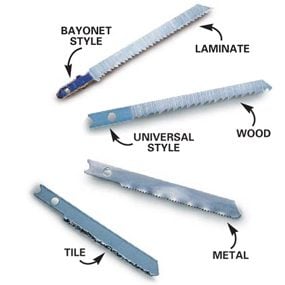
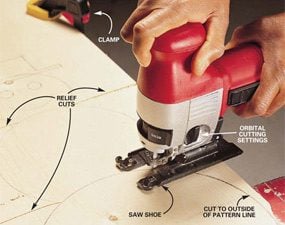
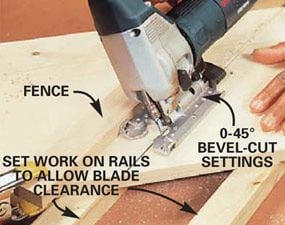
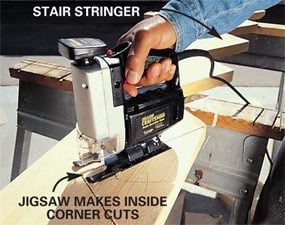

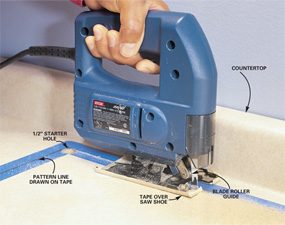


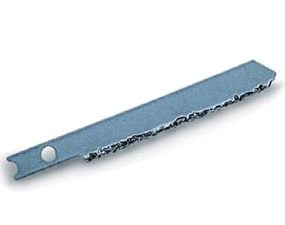
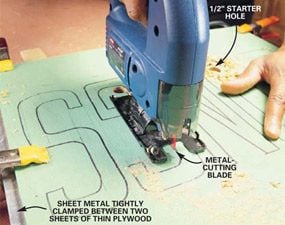


0 Response to "How To Set Up A Jigsaw"
Post a Comment